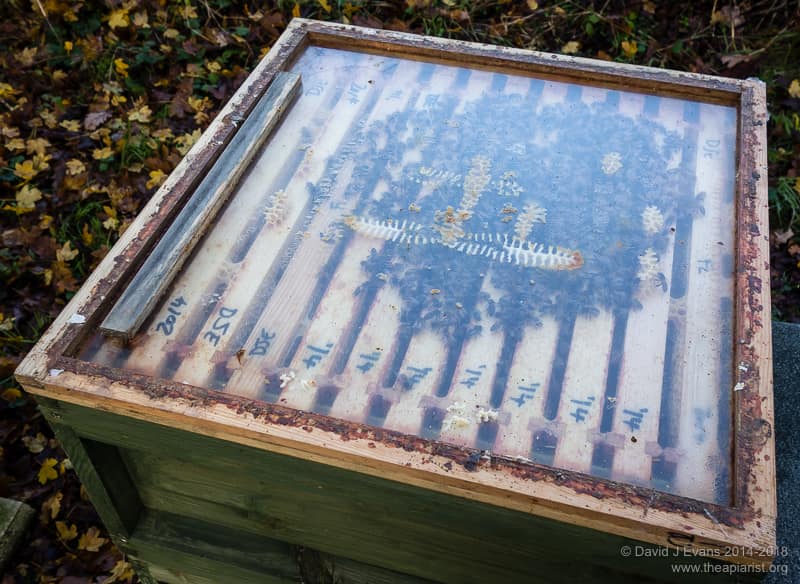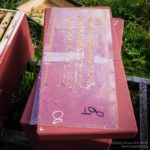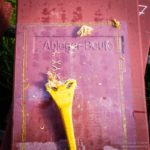Cleaning perspex crownboards

Perspex crownboard …
I’ve previously described the perspex insulated crownboards I use. These allow me to determine how the colony is expanding in Spring, or how much fondant remains during autumn feeding, with minimal disruption to the colony. The poly Everynuc I use is also supplied with a semi-flexible clear polycarbonate sheet to be used as a crownboard†. Note that the terms ‘perspex’ and ‘polycarbonate’ are almost certainly incorrect, but I’m sure you are familiar with the sort of material I’m talking about (and may even know the correct names for it).
My crownboards have bottom beespace and the polynucs are nominally top beespace. Nevertheless, perhaps because of the inherent flex in these materials or my shoddy workmanship, the bees often start to build wax fillets between the top bars and the crownboard. When replacing the crownboard after inspecting the colony this can trap bees so periodically needs to be removed. If you have one of the blade-ended hive tools this can be used but I’ve found a much better solution is a Stanley-bladed window paint scraper. However, don’t use a brand new blade as it will inevitably catch and stick into the relatively soft perspex/plastic/polycarbonate of the crownboard. Instead use an old and blunt blade which makes short work of the wax and propolis adhering to the crownboard.
- Rigid perspex …
- Flexible polycarbonate …
- Scraped clean …
Inevitably the bees will have started to refill the gap when you next inspect the colony but at least you won’t be faced with a little row of corpses trapped along the top of the frame. The wax can be collected and eventually melted down in a steam wax extractor and turned into something more useful, like candles, firelighters or soap.
† made by Bayer, the German agripharma company, if you bother to read the shrink-wrap plastic that covers it when supplied …



Join the discussion ...